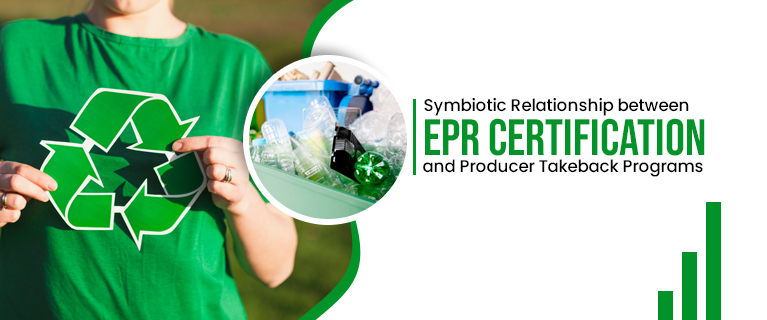Understanding the EPR Certificate Format in India
Environmental issues are becoming more and more important in today's world of rapid evolution. With increasing awareness about the impact of human activities on the planet, governments and organizations worldwide are adopting measures to mitigate environmental damage and promote sustainability. One such measure is Extended Producer Responsibility (EPR), which places the onus on producers to manage the environmental impact of their products throughout their lifecycle. As part of EPR compliance, producers are often required to obtain an EPR certificate. In this blog post, we will delve into the intricacies of the EPR certificate format, its significance, and the key elements it encompasses.
What is an EPR Certificate?
An EPR certificate is a document issued to producers or manufacturers as proof of their compliance with Extended Producer Responsibility regulations. These regulations vary from country to country but generally require producers to take responsibility for the collection, recycling, or disposal of their products at the end of their useful life. The certificate serves as evidence that the producer has fulfilled their obligations under the EPR framework.
Read also this-: The Significance of EPR Certification in Waste ManagementKey Elements of the EPR Certificate Format:
1. Producer Information:
The EPR certificate typically begins with detailed information about the producer or manufacturer, including their name, address, contact details, and registration number. This section establishes the identity of the entity responsible for the product's lifecycle management.
2. Product Details:
Next, the certificate outlines the specific products covered under the EPR scheme. This may include details such as product name, description, model number, and any relevant specifications. Clearly defining the products helps ensure that the producer's obligations are clearly delineated.
3. Compliance Statement:
The heart of the certificate is the compliance statement, where the producer affirms their adherence to EPR regulations. This section may include statements indicating that the producer has implemented collection, recycling, or disposal mechanisms for their products, as required by law.
4. Verification and Certification:
To validate the authenticity of the certificate, there should be provisions for verification and certification. This may involve third-party audits or inspections to ensure that the producer is indeed meeting their EPR obligations. The certificate should bear the seal or signature of the certifying authority for added credibility.
5. Validity Period:
EPR certificates are typically valid for a specified period, after which they need to be renewed. The validity period may vary depending on the regulatory requirements and the nature of the products involved. Including the validity period on the certificate ensures that producers are held accountable on a recurring basis.
6. Additional Requirements:
Depending on the jurisdiction and the specific EPR scheme, the certificate may include additional requirements or conditions that producers must fulfill. These could range from reporting obligations to targets for recycling rates or waste reduction measures.
Significance of the EPR Certificate:
The EPR certificate plays a crucial role in promoting environmental stewardship and accountability among producers. By requiring producers to obtain and maintain these certificates, regulators ensure that the burden of managing end-of-life products is not shifted to society or the environment. Instead, producers are incentivized to adopt sustainable practices, such as product design for recyclability or the establishment of take-back programs.
Furthermore, the EPR certificate enhances transparency and trust in the marketplace. Consumers, retailers, and other stakeholders can have confidence that products bearing the certificate have been responsibly managed throughout their lifecycle. This fosters a culture of sustainability and empowers consumers to make informed choices that align with their values.
Read also this-: Symbiotic Relationship between EPR Certification and Producer Takeback ProgramsChallenges and Opportunities:
While the EPR certificate is a powerful tool for promoting environmental responsibility, its effectiveness hinges on robust enforcement and compliance mechanisms. Producers may face challenges in meeting EPR requirements, particularly in industries with complex supply chains or rapidly evolving technologies.
Producers can leverage EPR Certification requirements as a catalyst for adopting circular economy principles and developing more sustainable business models. By investing in product design, recycling infrastructure, and consumer education, producers can not only meet their regulatory obligations but also differentiate themselves in the market and build brand loyalty.
Conclusion:
In conclusion, the EPR certificate format is a vital component of Extended Producer Responsibility frameworks around the world. By documenting producers' compliance with environmental regulations, these certificates promote accountability, transparency, and sustainability throughout the product life cycle. As the global community continues to grapple with environmental challenges, EPR certificates serve as a beacon of hope, guiding producers toward a more sustainable future for our planet.




Comments
Post a Comment